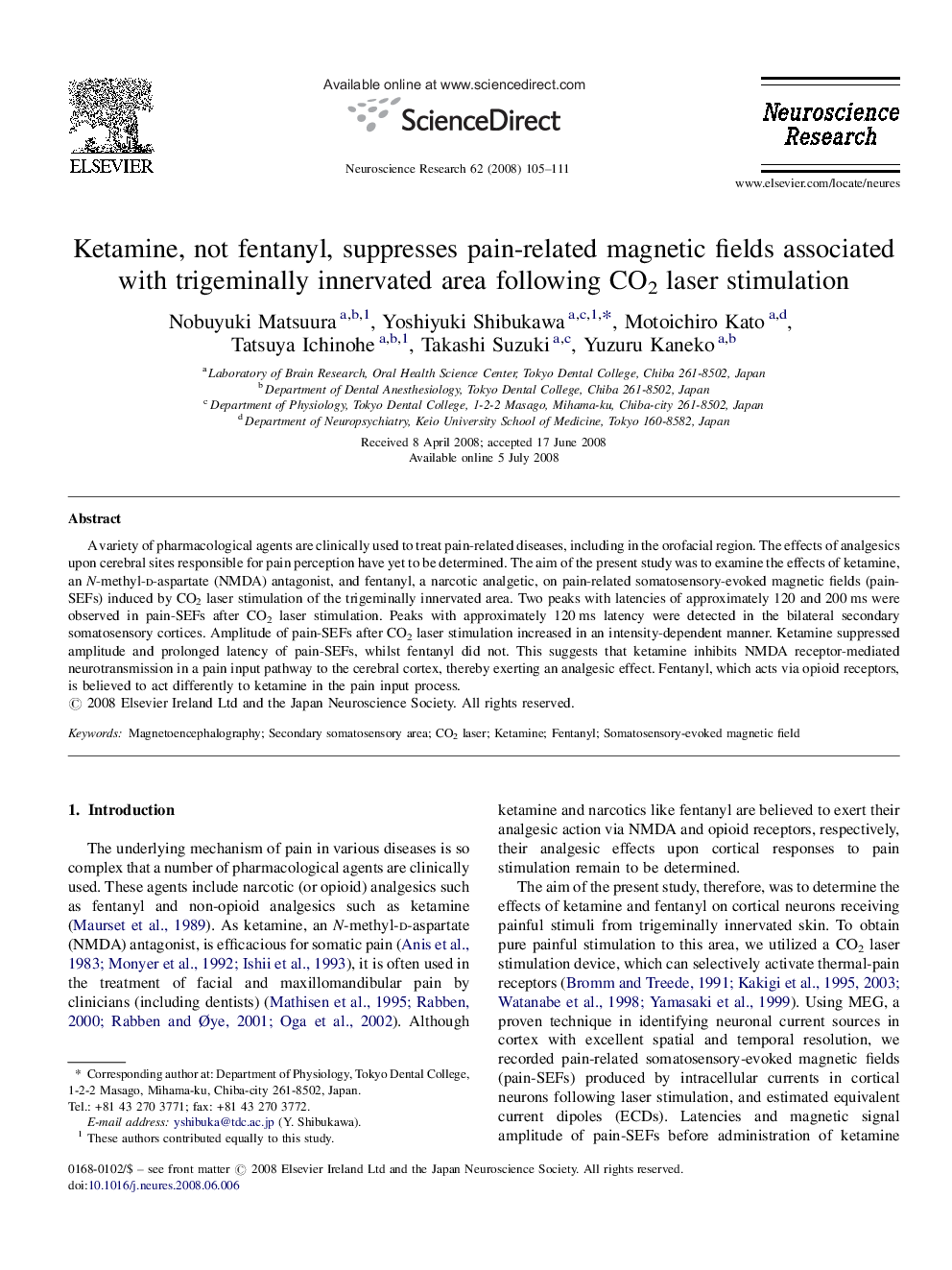| Article ID | Journal | Published Year | Pages | File Type |
|---|---|---|---|---|
| 4352296 | Neuroscience Research | 2008 | 7 Pages |
A variety of pharmacological agents are clinically used to treat pain-related diseases, including in the orofacial region. The effects of analgesics upon cerebral sites responsible for pain perception have yet to be determined. The aim of the present study was to examine the effects of ketamine, an N-methyl-d-aspartate (NMDA) antagonist, and fentanyl, a narcotic analgetic, on pain-related somatosensory-evoked magnetic fields (pain-SEFs) induced by CO2 laser stimulation of the trigeminally innervated area. Two peaks with latencies of approximately 120 and 200 ms were observed in pain-SEFs after CO2 laser stimulation. Peaks with approximately 120 ms latency were detected in the bilateral secondary somatosensory cortices. Amplitude of pain-SEFs after CO2 laser stimulation increased in an intensity-dependent manner. Ketamine suppressed amplitude and prolonged latency of pain-SEFs, whilst fentanyl did not. This suggests that ketamine inhibits NMDA receptor-mediated neurotransmission in a pain input pathway to the cerebral cortex, thereby exerting an analgesic effect. Fentanyl, which acts via opioid receptors, is believed to act differently to ketamine in the pain input process.
